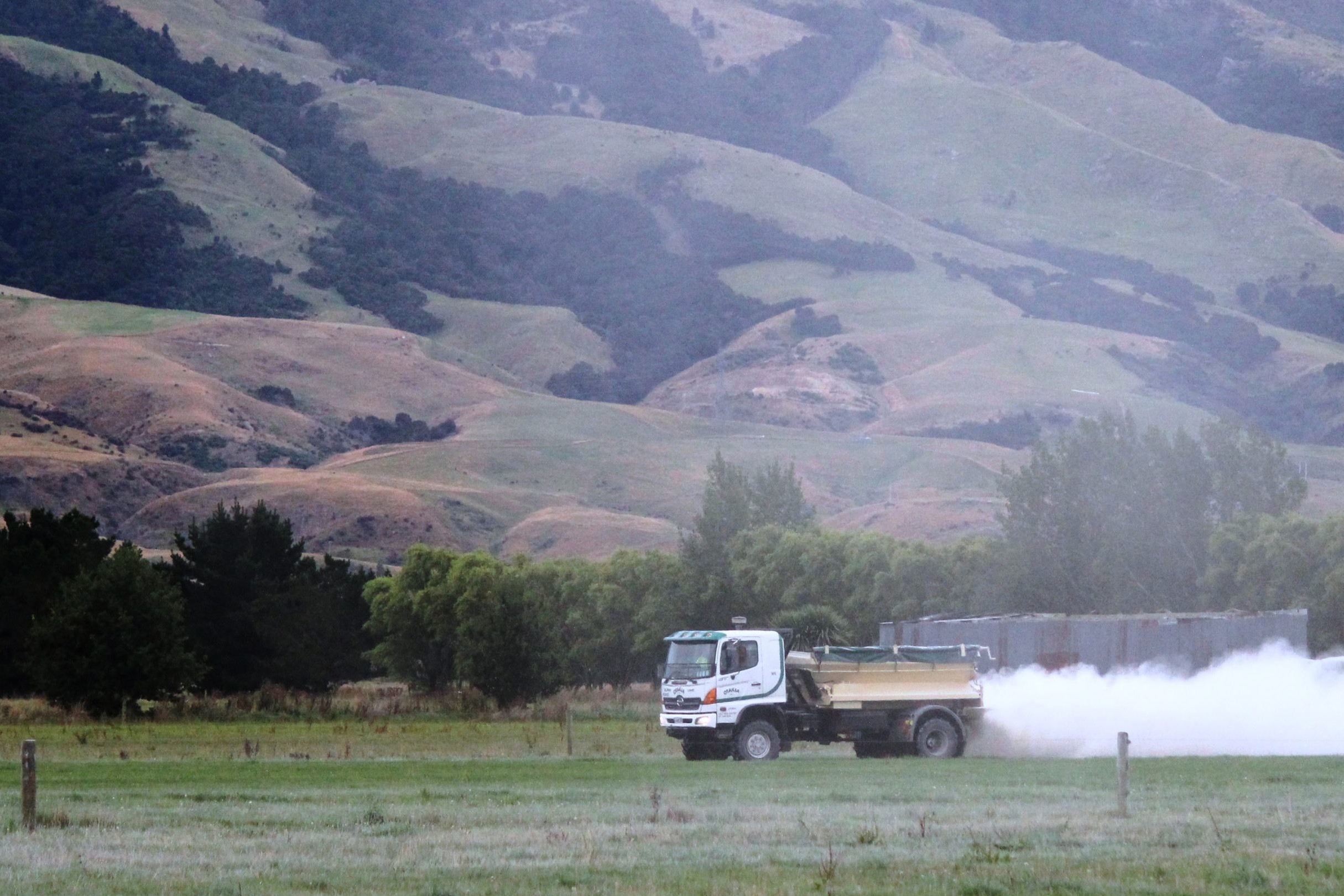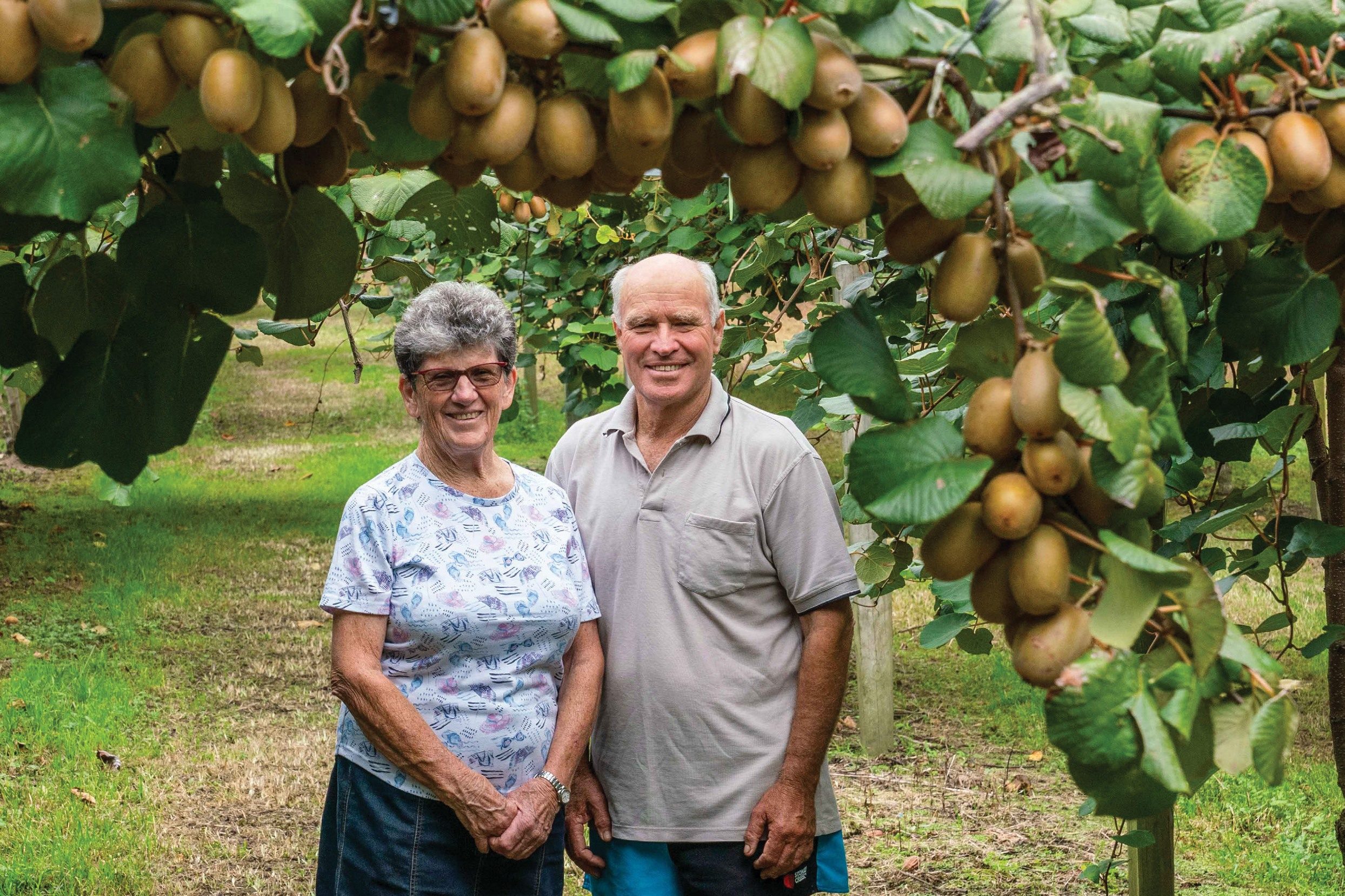A score of 100% in the Te Ara Miraka farm excellence programme is earning this farming couple an extra 20c/kg MS. Elaine Fisher has the details. Photos by Malcolm Pullman.
The blue Te Ara Miraka sign at the gateway to Sandel Ridge Farm signifies that its owners not only strive for but also achieve excellence in dairying.
In fact, this season Sarah and Peter Walters achieved a perfect score of 100% in the Te Ara Miraka farm excellence programme, earning them an additional 20c/kg MS.
It’s a source of considerable pride for the Walters, and of course the 20c bonus is welcome, but in many ways achieving a perfect score for excellence across a wide range of farming activities, including animal welfare, sustainable land management and supporting staff, means even more.
“I’d be really gutted if we lost any points for not meeting the Te Ara Miraka goals,” says Peter.
The couple’s Sandel Ridge Farm near Whakamaru was one of five Miraka suppliers to achieve a perfect 100% score this year. The second and neighbouring farm called Punawai, which they also own, achieved 96% earning second place. The other farms to achieve 100% were Papatangi, Arataki, Glengour, and Chamberlin Trust.
Eighteen of the 101 Miraka participating farms reached a score of 90%. That’s up on the 10 farms that achieved over 90% when the awards began four years ago. The excellence standards include a mix of mandatory and optional criteria. Optional criteria are allocated points, and results are financially incentivised over and above the base milk price.
Criteria for the awards are strict, and Sarah says failing to meet even one of the many mandatory standards means the loss of all points.
Grant Jackson, Miraka’s General Manager of Milk Supply, says; “We’re asking farmers to really raise the bar and strive for excellence. This is about more than just meeting regulations. Our goal is to show what’s possible and to become true leaders in the industry.”
Sarah and Peter agree. “Most of the criteria assessed by the programme are about good farming practices, the kind of things we should all be doing,” says Peter.

Even without the awards programme Sarah and Peter would strive to meet high standards, but the incentive of an improved milk price has prompted them to go even further.
“In many ways the programme is helping all Miraka suppliers to prepare for the environmental regulations which are coming. We feel we are ahead of the game and ready now.”
Sarah says setting out to meet all the standards makes sense. “Milk is what our business produces and meeting the Te Ara Miraka standards is a way of adding value to our product, so why wouldn’t you strive to be the best?”
Te Ara Miraka (the Miraka Way) is described by the company as “setting the benchmark and being the best in class in our business. It also supports and encourages a culture of excellence through the entire Miraka supply chain – from the farm to the consumer”.
Twenty-seven different aspects of farm management are judged and points are awarded for performance in each under five category headings: Nga Tangata/people, Te Taiao/ environment, Taurikura/prosperity, Nga kau/cow, and Miraka/milk.
Staff must receive at least the minimum wage and have training opportunities. Effluent management and healthy waterways are also scrutinised as is financial planning and farm performance, animal welfare, absence of the use of growth hormones, in-calf rate and herd traceability.
Having compliant shed water, a farm dairy shed A rating, milk cooling and security and being grade free also earns points.
“The criteria change slightly each year so there’s always something more to strive for,” says Peter.
This is the Walters’ sixth season supplying Miraka although Sandel Ridge Farm was a foundation supplier for the iwi-owned, Taupo based dairy company.
Sarah and Peter, parents of Caitlin (14) Nick (12) Cameron (11) and Matt (9), bought the 214ha farm five years ago, moving from Otorohanga where they had been in equity partnership with Peter’s family.
The couple had been proud Fonterra farmers but, strapped for cash to buy their first farm, the opportunity to supply Miraka without having to buy shares, plus the company’s philosophies and high standards, appealed.
“There’s always an argument about the advantages and disadvantages of co-operatives versus corporates but we feel Miraka is small enough to be close to its suppliers. The management team is so small in number it could sit round our kitchen table, and they know every supplier by name,” says Peter.
On Sandel Ridge Farm, 555 cows are milked through a 40-a-side herringbone dairy, while on the neighbouring 210ha farm bought two years ago 500 cows are milked in the 30-a-side herringbone shed. The farms operate as independent units with six full-time staff employed across both.
Achieving a six-week in-calf rate of 78% (up from 72-74%) has been a high point for Sarah and Peter, beginning as they did with a very mixed herd of cows. “In our first season here we had cows calving from late June to late October. It was just too hard on everyone,” says Peter.
“We have concentrated on training staff to better manage mating, making sure the herd and young cows in particular are well fed, and use LIC A2A2 semen for four weeks followed by bulls for six weeks.”
Sarah says the herd is now at the stage where breeding cows can be selected on performance, with the aim of developing an A2 Jersey/Friesian crossbred, high performing herd. Last season’s production was 440kg MS per cow, or 1200kg MS per hectare.
Sandel Ridge Farm was well established and needed relatively minor improvements when the Walters took it over. They have upgraded the dairy cooling systems and spent in excess of $30,000 to pump surface water from the farm’s underpass to meet environmental standards.
The soil is mainly ash over loam. Despite its central North Island location there’s little or no pumice. “I wish we did have pumice for races,” says Peter. “It’s fertile soil, which grows grass and drains well. If you talk to old timers they will tell you that 30 to 40 years ago you couldn’t make mud here but, thanks to topsoil creation through farming, sometimes there’s mud now.”
Peter applies most of the fertiliser himself. The soil needs mainly sulphur with some potassium and phosphorus. Nitrogen is used sparingly, at a rate of around 125 units per year. Dairy shed effluent is spread by a travelling irrigator over 33% of the farm.

This summer’s drought saw milk production drop by around 15,000kg MS and forced the couple to buy in more feed than usual at an additional cost of around $80,000 on the home farm alone.
“We bought in hay, more palm kernel, and grape waste as well as fed our own silage and grew 11ha of turnips and 3ha of fodder beet,” says Sarah.
Mild weather and welcome rain during winter saw grass growth rebound quite quickly, which was just as well as all the animals stayed onfarm this winter. While this did save grazing-off costs, careful management was required to keep stock well fed. “We have proved that we can over-winter our stock here and may consider doing so in future,” says Sarah.
The farm’s contour is flat to rolling with only a few sidlings too steep for vehicles. It features established trees and is set against a backdrop of hills and neighbouring farms. However, this is also a forestry area and 20 to 30ha of the second farm has the potential to be planted in pines, adding diversity to the family farming business.
Buying a second farm was a big step for Peter and Sarah, but with reliable staff, some economies of scale and time management the couple have found they in fact have more time for themselves and their family. “Last summer we had the longest family holiday we’ve ever had,” says Sarah.
Covid-19 lockdown and the long-term impacts of the pandemic on the world’s economy has caused Sarah and Peter some sleepless nights, but recent more optimistic forecasts by economists and banks, and the fact that consumers in times of crisis turn to healthy foods, have revived their optimism. They also reflect on the positive change in the New Zealand public’s perception of farming.
“It appears more people are appreciating how important dairying is to our economy,” says Peter who believes there are strong parallels between the New Zealand dairy industry and the All Blacks.
“The All Blacks are seen by other rugby nations as examples of quality and efficiency and looked to for ways to improve their own game. I think other nations also look to New Zealand as a world leader for excellence in the production of high-quality dairy products.
“Like the All Blacks, dairying has its armchair critics but I think Covid-19 has brought about an understanding of what our industry contributes to the economy and a change in attitudes among many.”
Sarah and Peter believe the industry overall needs to continue to lift its standards. The Miraka way and the high number of its farmers scoring 90 to 100% serves as an example of what can be achieved. Incentivising farmers to strive for excellence across all aspects of farm management and rewarding them financially is far more effective than imposing penalties for failing to meet set standards, they believe.






